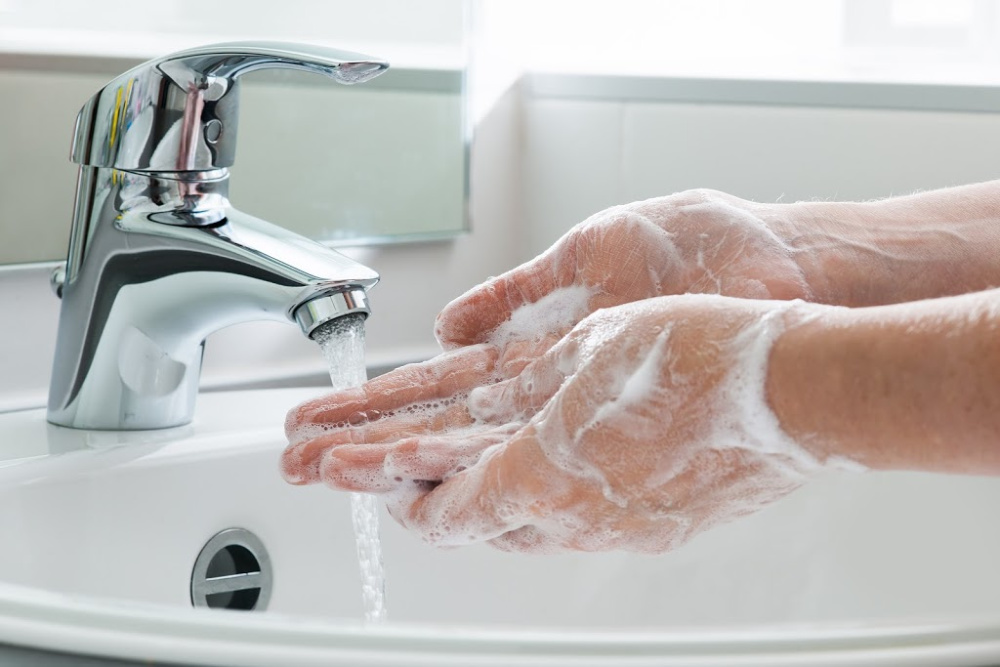In light of what is going on in the world at this moment in time, there is no way to deny we are in the midst of a serious situation. Knowing some truths about COVID-19 and the facts, stats and medical protocol should not be ignored or taken lightly.
Many schools and businesses have already moved to online work, but for those who are still actively working in the office, it’s essential to take active steps to keep your workspace clean.
The Centers for Disease Control (CDC) and Prevention and Occupational Safety & Health Administration (OSHA) have some good tips on their website on how to disinfect your workspace and keep yourself healthy.
Wash Your Hands
This can’t be said enough. I am contacted almost daily by disgruntled employees, who can’t help but notice their colleagues don’t follow necessary hygiene measures in the restroom and kitchen. On a regular day, this is important, but every time you go to the bathroom, blow your nose or make food in the office kitchen, thoroughly wash your hands. The proper way to wash your hands is spelled out here.
There is a Difference in Cleaning and Disinfecting
For a thorough rundown on how to clean and disinfect surfaces and touched objects, visit cdc.gov/flu/school/cleaning.htm. Here are a few tips you will find on their website:
Cleaning removes dirt, germs and other impurities from surfaces. Soap (or detergent) and water physically removes germs from the surface but doesn’t necessarily kill them. But by eliminating the germs, it lowers the number and the risk of spreading.
Disinfecting kills the germs with chemicals. This does not necessarily clean dirty surfaces or remove germs. But by killing the germs after you clean, it can lower the risk of spreading.
Sanitizing lowers the number of germs to a safe level, deemed by public health standards and requirements.
Clean Your Work Space and Technology
Use an EPA approved cleaning product to clean off your telephone, computer keyboard and mouse, along with any other objects you use regularly. Don’t forget your writing pens, stapler, printer and your desk.
Don’t Forget Your Cell Phone
The CDC considers your phone a “high touch” surface. According to the New York Times, a wipe with a product that has 70% isopropyl alcohol will disinfect your device. Here are a few tips recommended by Apple support:
- Only use a soft, lint-free cloth (avoid towels and paper towels)
- Excessive wiping may cause damage
- Do not use aerosol spray or bleach
- Be sure to unplug all power sources and cables
- Do not spray cleaners directly onto your device
- Unless otherwise noted, keep all liquids away; do not get moisture into any openings
Sanitize When You Don’t Have Soap
This is easier said than done now that all of the stores are out of hand sanitizer. But, when you see a bottle at the checkout line, don’t hesitate to use it. The World Health Organization has a guide to making your own. There is a debate on safety if it is made incorrectly.
Keep Your Distance
Use your best judgment when it comes to social distancing. Be sure to keep a distance of 6 feet between yourself and another person, especially when the other person is coughing or sneezing. Avoid touching your eyes, nose or face. Stay out of crowds and exercise common sense. If you are feeling sick, stay home for the sake of yourself and others. Every day there are new updates and as of this writing, many schools, restaurants, bars and businesses are shutting down.
During this uncertain time, it’s essential to be respectful and mindful of not only yourself but others. Awareness – knowledge – (not panic) – are all practical steps to taking care.
You may also like Temporarily Rethinking the Handshake with Coronavirus. For more of Diane’s etiquette tips read her posts on Inc., subscribe to her articles on The Huffington Post, “like” The Protocol School of Texas on Facebook, and follow her on Pinterest, Instagram and Twitter.

